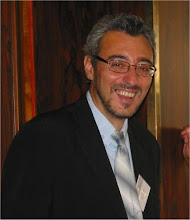
Italian mathematician and physicist, born at Faenza, 15 October, 1608, Torricelli was educated at the Jesuit college of Faenza, where he showed such great aptitude for the sciences that his uncle, a religious of the order of the Camaldolesi, sent him to Rome in 1626 for the purpose of study. There he fell in with Castelli, the favorite pupil of Galileo, who instructed him in the work of the master on the laws of motion. Torricelli showed his thorough understanding by writing a thesis on the path of projectiles. Castelli sent this essay in manuscript to Galileo with strong recommendations of his young friend. Galileo invited Torricelli to his house but for personal reasons he was unable to accept until three months before the death of the blindscientist (1641). The grand duke prevailed upon him to remain at Florence and to succeed Galileo at the Academy. He solved some of the great mathematical problems of the day, such as the finding of the area and the centre of gravity of thecycloid
In 1641, Evangelista Torricelli moved to Florence to assist the astronomer Galileo. Then in 1644 in Florence Torricelli performed the famous experiment of “argento vivo” (quicksilver i.e. mercury). He filled a glass tube, open at one end, with mercury. Then, closing off the open end with a finger, he tipped the tube upside down and lowered it into a basin containing more mercury. By observing that the height of a mercury column in one-sided glass tubes, was independent of the shape and inclination of the tubes, he concluded that the column of mercury only descended partially, stopping at a height of around 76 cm.
Torricelli proclaimed that the space created by the descent of the mercury in the tube was empty, and that what held up the column of mercury depended on the pressure that the air exerted on the mercury in the basin. In 1644 Torricelli declared that his experiment proved two fundamental concepts: that nature did not abhor the void, and that the air had weight. The results of the mercury experiment opened a period of revolutionary transformations and forced a fresh look at a doctrine which had been in force for centuries.
Later generations of scientists, most notably Blaise Pascal, developed the barometer further.

You can demonstrate air pressure's effects through an experiment similar to Torricelli's. Stick a plastic straw in a glass of juice or other colored drink, and suck enough liquid into the straw to fill it about halfway up. When you suck on the straw, a partial vacuum is created in the top of the straw. Air pressure on the liquid in the glass forces the juice up the straw and into your mouth. Now, hold your finger over the top of the straw and slowly pull the straw out of the glass. While your finger is pressed over the top, a partial vacuum is maintained in the top of the straw. The air pressure is greatest underneath the straw and will keep the liquid from dripping out.
ReplyDelete